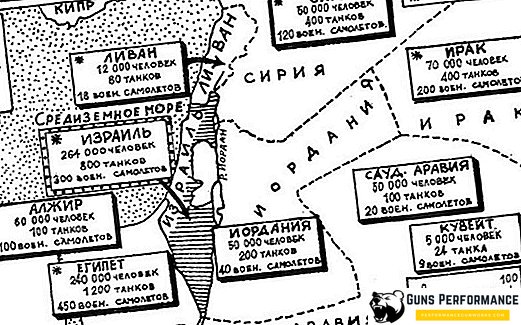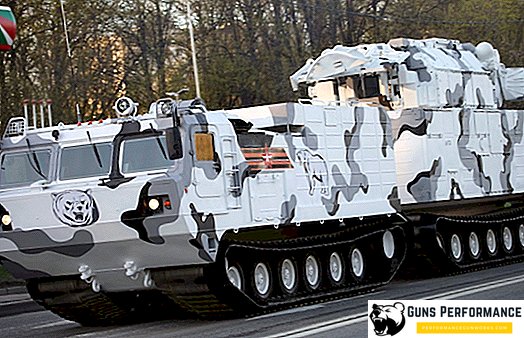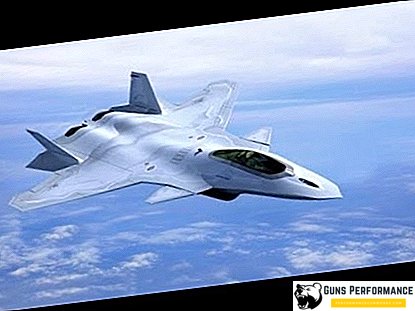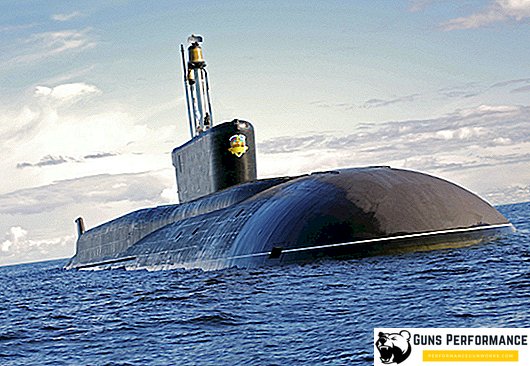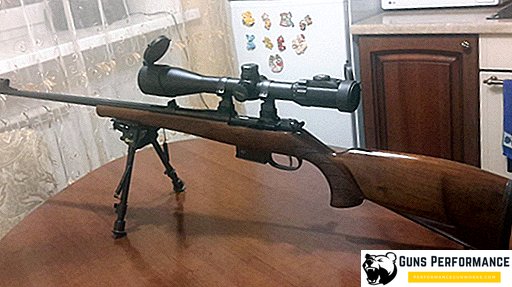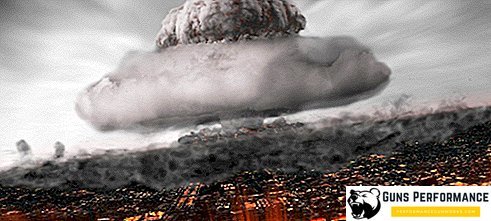
The epoch of the Cold War significantly added phobias to humanity. After the nightmare of Hiroshima and Nagasaki, the horsemen of the Apocalypse found new traits and became real as never before. Nuclear and thermonuclear bombs, biological weapons, dirty bombs, ballistic missiles - all this carried the threat of mass destruction for multimillion megacities, countries and continents.
One of the most impressive "horror stories" of that period was the neutron bomb, a type of nuclear weapon specializing in the destruction of biological organisms with minimal impact on inorganic objects. Soviet propaganda paid much attention to this terrible weapon, the invention of the “gloomy genius” of overseas imperialists.
It is impossible to hide from this bomb: neither a concrete bunker, nor an air-raid shelter, any means of protection will save. At the same time, after the explosion of a neutron bomb, buildings, enterprises and other infrastructure will remain intact and fall straight into the clutches of the American military. There were so many stories about the terrible weapons that in the USSR they began to write jokes about him.
Which of these stories is true and what is fiction? How does a neutron bomb work? Are there any such ammunition in service with the Russian army or the US armed forces? Are there developments in this area today?
How a neutron bomb works - features of its damaging factors
The neutron bomb is a type of nuclear weapon, the main damaging factor of which is the flux of neutron radiation. Contrary to popular belief, after the explosion of a neutron ammunition, both a shock wave and light are generated, but most of the energy released is converted into a stream of fast neutrons. The neutron bomb refers to tactical nuclear weapons.

The principle of operation of a bomb is based on the property of fast neutrons to penetrate much more freely through various obstacles, as compared with X-rays, alpha, beta and gamma particles. For example, 150 mm of armor can hold up to 90% of gamma radiation and only 20% of the neutron wave. Roughly speaking, it is much more difficult to hide from the penetrating radiation of a neutron ammunition than from the radiation of an “ordinary” nuclear bomb. It is this property of neutrons that attracted the attention of the military.
The neutron bomb has a nuclear power of relatively low power, as well as a special unit (it is usually made of beryllium), which is the source of neutron radiation. After a nuclear charge is detonated, most of the explosion energy is converted into hard neutron radiation. The remaining damage factors — a shock wave, a light pulse, and electromagnetic radiation — account for only 20% of the energy.
However, all of the above is just a theory, the practical use of neutron weapons has some peculiarities.
The terrestrial atmosphere very much dampens neutron radiation, therefore the range of action of this damaging factor is no more than the radius of destruction of the shock wave. For the same reason, it makes no sense to manufacture neutron munitions of high power - the radiation will still fade out quickly. Neutron charges usually have a power of about 1 kT. When it is undermined, neutron radiation is damaged within a 1.5 km radius. At a distance of 1350 meters from the epicenter, it remains dangerous to human life.

In addition, the neutron flux causes induced radioactivity in materials (for example, in armor). If a new crew is placed in a tank that is hit by a neutron weapon (at distances of about a kilometer from the epicenter), then it will receive a lethal dose of radiation within 24 hours.
It is not true that the neutron bomb does not destroy material assets. After the explosion of such a munition, both a shock wave and a pulse of light are generated, the zone of severe damage from which has a radius of approximately one kilometer.
Neutron munitions are not very suitable for use in the Earth’s atmosphere, but they can be very effective in outer space. There is no air there, so neutrons travel unhindered over very significant distances. Due to this, various sources of neutron radiation are considered as an effective means of antimissile defense. This is the so-called beam weapon. True, as a source of neutrons, it is not usually considered neutron nuclear bombs, but generators of directed neutron beams - the so-called neutron guns.

The developers of the Reagan program of the Strategic Defense Initiative (SDI) also proposed using them as a means of hitting ballistic missiles and warheads. When a neutron beam interacts with materials of construction of rockets and warheads, induced radiation occurs, which reliably disables the electronics of these devices.

After the appearance of the idea of a neutron bomb and the beginning of work on its creation, methods for protection against neutron radiation were developed. First of all, they were aimed at reducing the vulnerability of military equipment and the crew in it. The main method of protection against such weapons was the manufacture of special types of armor, which absorb neutrons well. Usually they were added boron - a material that perfectly captures these elementary particles. You can add that boron is part of the absorbing cores of nuclear reactors. Another way to reduce the neutron flux is to add depleted uranium to armor steel.
By the way, almost all military equipment, created in the 60s - 70s of the last century, is maximally protected from most of the damaging factors of a nuclear explosion.
The history of the creation of the neutron bomb
The atomic bombs blown up by Americans over Hiroshima and Nagasaki are usually referred to the first generation of nuclear weapons. Its principle of operation is based on the fission reaction of uranium or plutonium. The second generation includes weapons, in principle of which nuclear fusion reactions are laid - these are thermonuclear ammunition, the first of which was blown up by the United States in 1952.
The third generation nuclear weapons include ammunition, after the explosion of which the energy is directed at enhancing one or another damage factor. It is to such munitions are neutron bombs.
For the first time, the creation of a neutron bomb was started in the mid-60s, although its theoretical justification was discussed much earlier - in the mid-40s. It is believed that the idea of creating such weapons belongs to the American physicist Samuel Cohen. Tactical nuclear weapons, despite their considerable power, are not very effective against armored vehicles, armor well protects the crew from virtually all the damaging factors of classic nuclear weapons.
The first test of a neutron combat device was conducted in the United States in 1963. However, the radiation power was much lower than that expected by the military. It took more than ten years to fine-tune the new weapon, and in 1976, the Americans conducted regular tests of the neutron charge, the results were very impressive. After that, it was decided to create 203-mm shells with a neutron warhead and warheads for tactical ballistic missiles "Lance".

Currently, technologies that allow the creation of neutron weapons are owned by the United States, Russia and China (and possibly France). Sources report that the massive release of similar ammunition lasted until about the mid-80s of the last century. It was then that the use of boron and depleted uranium began to be added to the armor of military equipment, which almost completely neutralized the main damaging factor of neutron ammunition. This led to the gradual abandonment of this type of weapon. But how the situation really is is unknown. Information of this kind is under many secrets and is practically not accessible to the general public.


